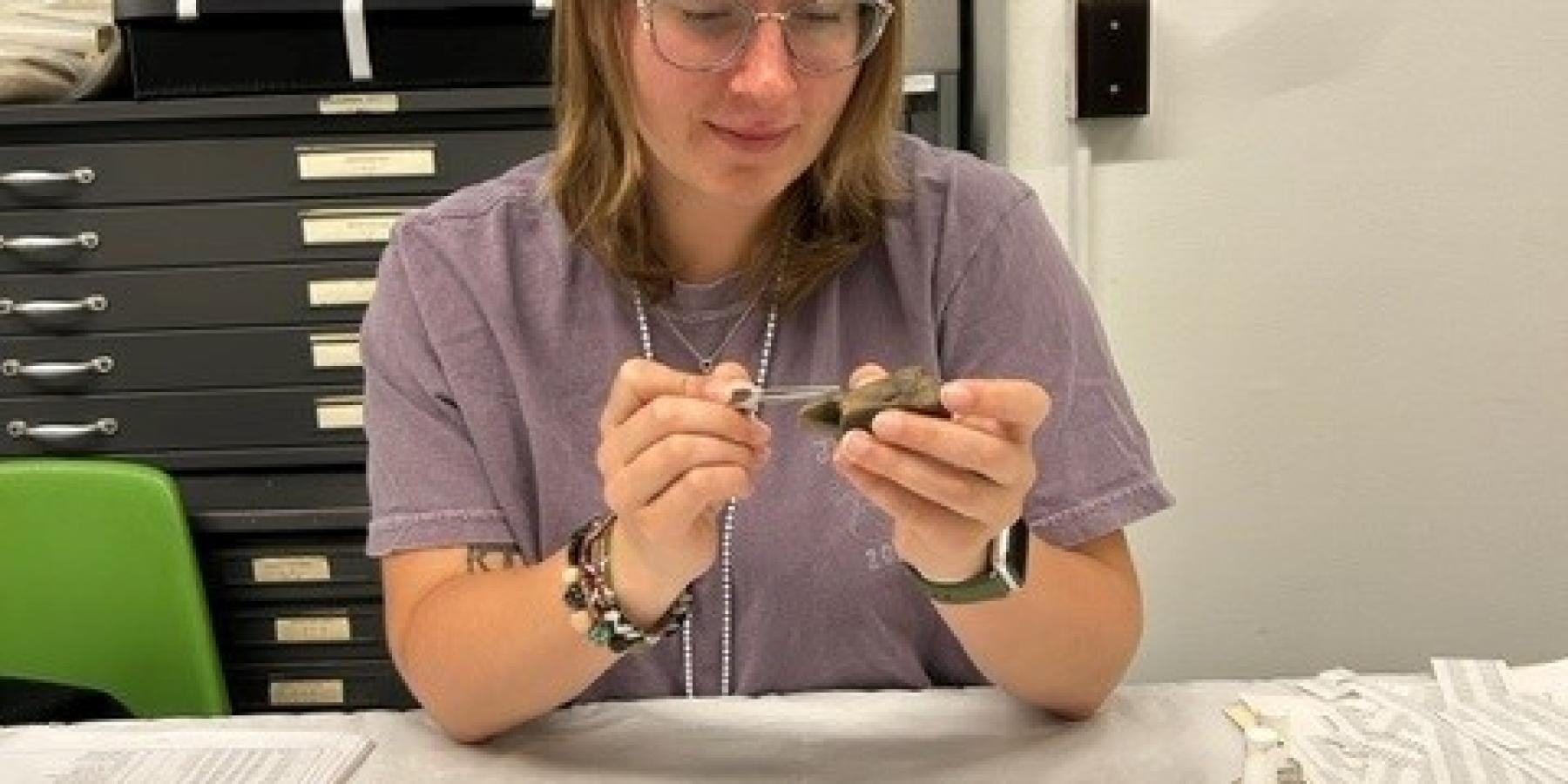Support
Many people throughout their lives visit museums out of curiosity or to find enjoyment in the prospect of learning. However, there are many moving pieces that are required behind-the-scenes to ensure an educational and informative experience. This “behind-the-scenes" work is what I was able to experience this summer. I was an Archaeological Collections Intern at the Annex of the Carnegie Museum of Natural History (CMNH). This opportunity allowed me to participate in a variety of tasks which all gave me a glimpse into how museums function and what the day-to-day of these staff members looks like. These tasks included cataloging and developing a system of permanent organization for an archaeological collection from Blairsville, PA (site 36In0002; LPP 2006). This site was occupied 400-500 years ago, making it a Late Prehistoric Native American site that was originally excavated in 1952 by the Carnegie Museum. However, the site was buried by flooding related to the Conemaugh dam and was reopened as an archaeological field school in 2006 for Indiana University of PA (IUP) where Dr. Sarah Neusius took the lead.
I performed this work with a Fine Fellow student from the University of Pittsburgh who was a great complement to my own knowledge of the archaeological collections system. This cataloging process contained many steps. The first was to compare the artifacts we had to the listings in the collection catalog. This step was crucial to understanding the materials that had been collected. Once we were sure the item was correctly listed in the catalog, we labeled the bag with the accession number and its corresponding item number, and for larger artifacts we labeled them with the accession number. If it was not in the catalog, we set it aside to talk with Kristina Gaugler, the Collections Manager of Anthropology and Dr. Neusius, who was the field school director at this site when she was a professor at IUP and since retirement has become a research associate at CMNH. As we wrapped up comparing artifacts to the catalog, the Fine Fellow and I worked on a prototype of boxes constructed out of acid free, archival blue board which would eventually act as the final organization system of this collection. With the help of many employees and volunteers of the Annex, we were able to construct enough boxes to act as long-term storage for this collection. We finished this project with enough time to begin on the 2008 boxes from the same Blairsville site.
When we were not working on the intake of this archaeological collection, Amy Covell-Murthy, our supervisor, the Archaeology Collection Manager, and Head of Section of Anthropology, gave us other initiatives to focus on. One such initiative was working on a blog post for the Museum’s marketing team. She also allowed us to attend decolonization working group meetings to gain an understanding of decolonization and its importance to the initiatives of CMNH. I learned so much about what my future could look like, and this experience reinforced my love for all things Anthropology, and I am very grateful to have had this opportunity.

